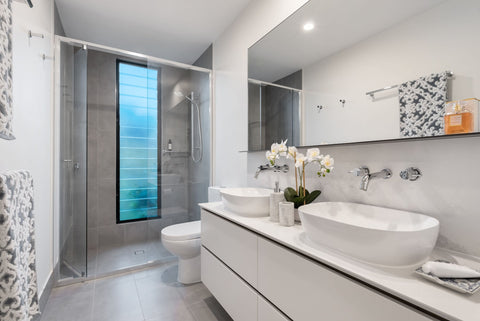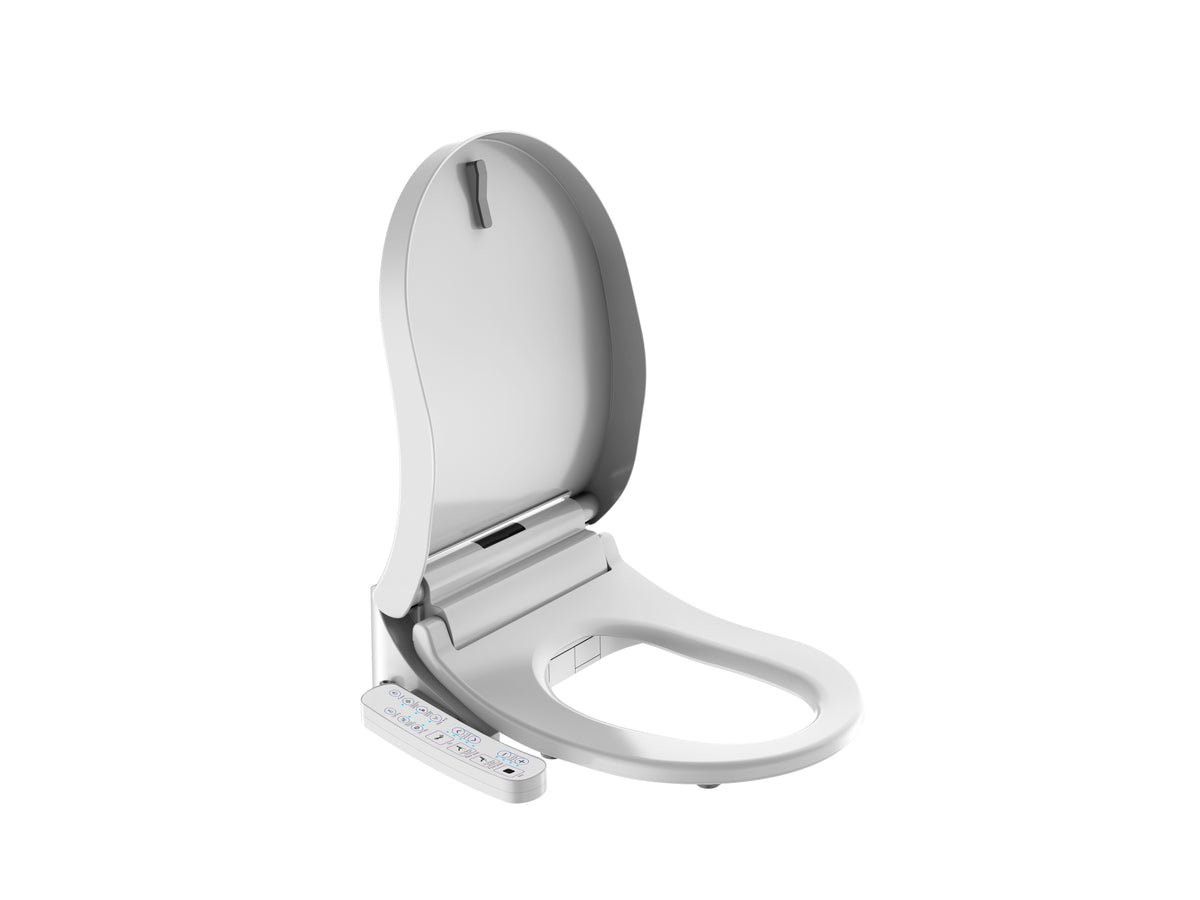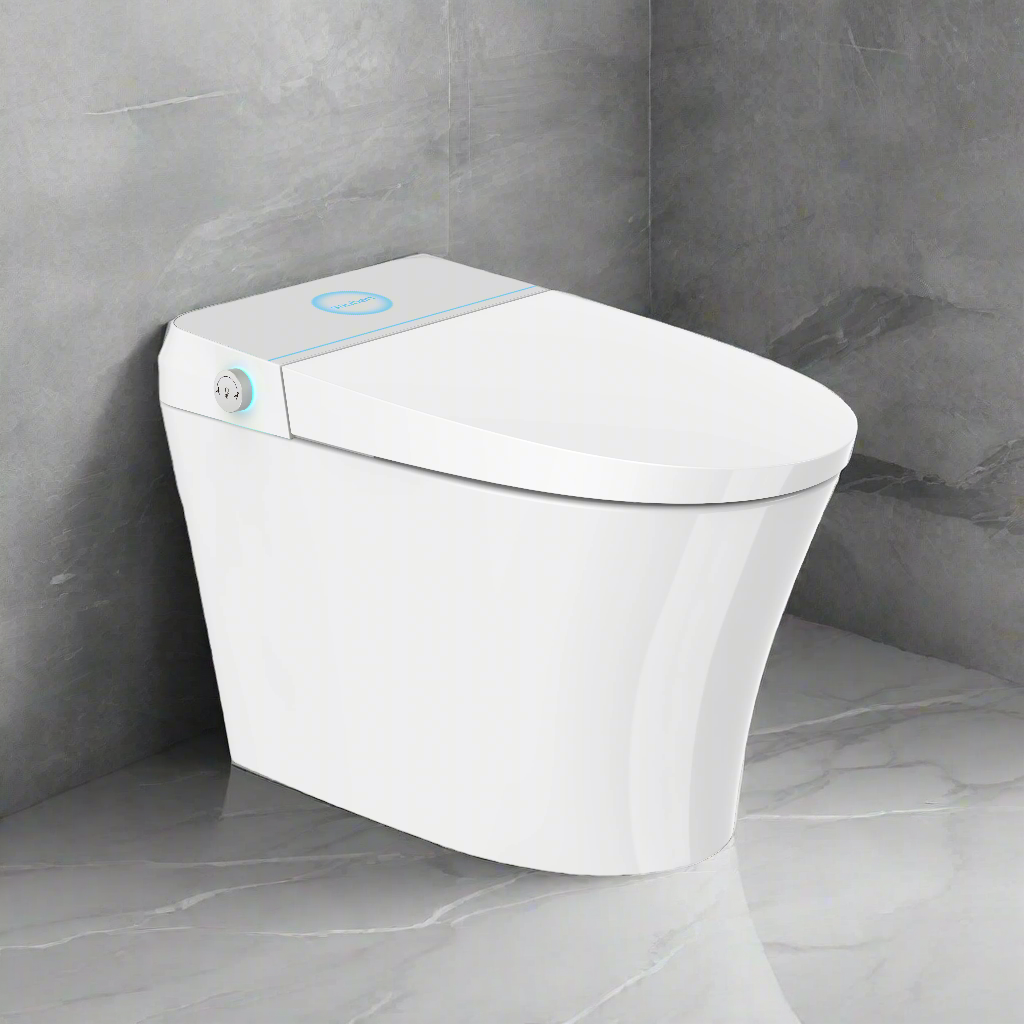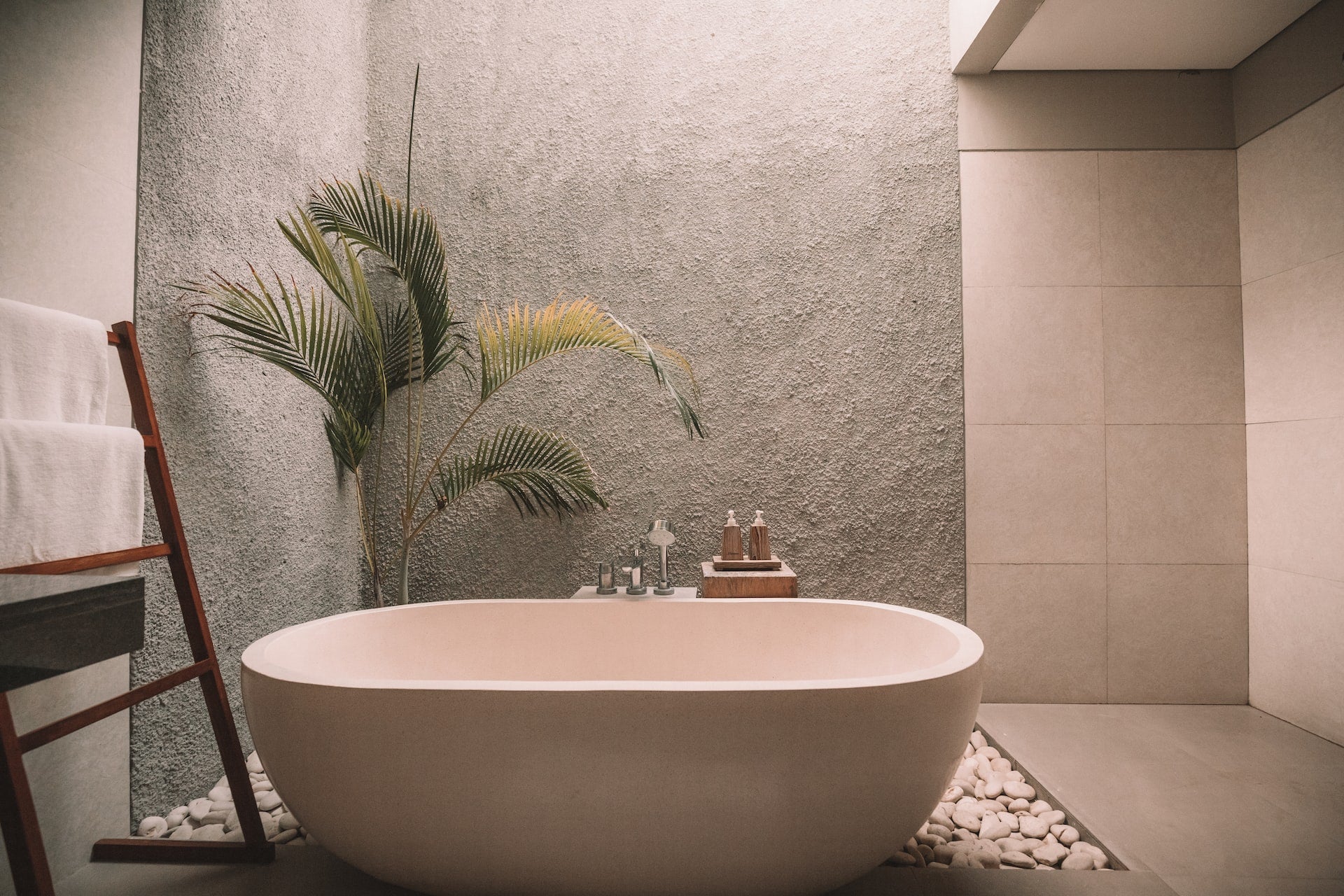Creating an eco-friendly bathroom is not only beneficial for your health and the environment, but it’s also a great way to update the look of your home. From sustainable materials to water-saving practices, there are so many different ways that you can create a green living space without sacrificing style or comfort.
This blog post will explore each step in creating an eco-friendly bathroom, including examining our favourite sustainable materials and exploring effective water conservation techniques. You’ll learn more about how to reduce energy usage while at the same time improving both aesthetic appeal and environmental friendliness—all in one room! So let's get started!
Why Create an Eco-Friendly Bathroom?
Creating an eco-friendly bathroom is one of the most important things we can do to help preserve our planet. An eco-friendly bathroom reduces energy, water and chemical usage and minimises waste production. Eco-friendly bathrooms can be created in various ways, such as investing in low-flow fixtures for your sinks and showerheads, and recycling any plastic or metal products.

Making small changes to how you use energy and resources in your bathroom can add up quickly in terms of helping the environment. Moreover, making eco-friendly changes adds up financially as well -- over time, energy-efficient lighting and using products like dual flush toilets can lead to substantial savings on water bills alone each month. With so many advantages to creating an eco-friendly bathroom, it's no surprise that it's gaining popularity worldwide.
Choosing Sustainable Materials for Your Bathroom
A sustainable bathroom transformation is a great way to reduce environmental impact while upgrading your space. Sustainable materials, such as responsibly sourced wood, natural stone and organic fabrics, can be used in various ways to create an eco-friendly bathroom. Choose elemental finishes and fixtures like fountain faucets and low-flow toilets to save money on water bills and light fixtures with motion sensors or LED technology for minimal energy consumption.
Additionally, look for products with recycled content or those made from renewable sources that do not require high amounts of energy for manufacture or transport. Not only are these materials better for the environment, but they also provide long-term savings on utility costs. You can create a beautiful, functional, sustainable bathroom with the right choices!
Bamboo and Cork Flooring: A Sustainable Alternative to Tiles
Going eco-friendly in the bathroom is an excellent way to reduce our environmental impact. Bamboo and cork flooring are two top choices for creating a sustainable space. Bamboo flooring offers the look of wood and is resistant to water and humidity, while cork is naturally anti-microbial, easy on the feet, and has sound insulation properties.
Both materials also have good sustainability; bamboo grows quickly and is harvested without killing the entire plant compared to hardwoods which often require cutting down forests. Cork is equally sustainable since harvesters only need to remove bark from the trees every nine years. Opting for either of these materials in the bathroom guarantees a healthy environment free from environmentally hazardous products.
Eco-Friendly Shower Curtains and Liners
Vibrant colours and bold prints, combined with stylish designs, make eco-friendly shower curtains and liners the perfect way to create an eco-friendly bathroom. These sustainable shower curtains are designed with recyclable materials such as cotton, hemp, and bamboo. Not only do they provide a stylish look for your bathroom, but they’re also better for the environment as these materials are made from natural biodegradable fabric that helps to reduce waste in landfills.
In addition, these organic fabrics ensure excellent water resistance, so you don't have to worry about exposure to harsh chemicals while bathing or showering. The best part is that they come in various colours and designs, so everyone can find something unique that matches their style. Now you can be stylish and environmentally conscious at the same time!
Bidets: Saving Water in the Bathroom
An eco-friendly bathroom is within reach, with smart toilets and bidets. Smart toilets use high-efficiency flushing systems to reduce the water used per flush, and bidets offer a more hygienic option than just using toilet paper. With fewer trips to the store for toilet paper and less water used with smart toilets and bidets, these technological advancements can help families become more sustainable.

Not only that, smart toilets and bidets allow users to customize their experience, providing comfort depending on their individual needs. The global market for smart toilets is predicted to grow as consumers become more aware of their potential to live a greener lifestyle; what better way than by making our bathrooms a bit smarter?
Green Cleaning Products for a Chemical-Free Clean
Green cleaning products are an excellent way to create a chemical-free, eco-friendly bathroom. By reducing waste and toxins generated from traditional cleaning products, green cleaning products can help you achieve a bath area that is cleaner and safer. Not only will you be reducing the toxins in your home, but you'll also be helping to reduce our environmental impact. This is especially important since bathroom areas often contain moisture or humidity, which can encourage the growth of unhealthy microorganisms.
Green cleaning products are specifically designed with simple yet effective ingredients that neutralize these harmful bacteria and keep your bathroom clean with fewer chemicals. Taking this proactive approach provides a healthful and comprehensive solution to reducing waste and promoting healthier alternatives when staying clean.
Reducing Energy Consumption with LED Lighting and Timers
Creating an eco-friendly bathroom reduces one's carbon footprint and can save money in the long run. Installing LED lighting and timers is important in reducing energy consumption without sacrificing better lighting. LED lighting is much more efficient than traditional bulbs, producing a better quality of light that illuminates the space.

LED lighting also produces less heat, enabling you to save on cooling costs by using fewer fixtures to achieve the same level of light needed to illuminate the room properly. Timers give you control over when your lights come on and go off, allowing you to create a custom schedule and reduce unnecessary energy use. With these two sustainable solutions combined, you can start reducing your energy consumption in the bathroom today!
Upcycling and Repurposing in the Bathroom Design
Upcycling and repurposing materials is a great way to create an eco-friendly bathroom. By shopping at thrift stores and antique shops, you can find opportunities to bring in beautiful, pre-loved items with a unique look. And by sourcing reclaimed wood or salvaged tiles and fixtures, you can also incorporate new elements that are not only environmentally conscious but stylish.
With a bit of imagination, any item with a fascinating look can be made into something useful in the bathroom - such as converting old furniture into vanity units with clever storage solutions or making mosaic art pieces with bits of broken tile. Upcycling and repurposing can also add green flourishes - consider using plants to decorate shelves and window sills to soften the room’s atmosphere and improve air quality.
Plant Life in the Bathroom: Benefits and Care Tips
Having plants in the bathroom can be good for your health and environment. This is because not only do they help to keep the air fresh and clean, but they can also improve mental well-being through interaction with nature. Good choices to create an eco-friendly bathroom include tough plants like English Ivy or Hydrangea that can tolerate more damp and humid conditions than others.
To ensure good plant health, inspect your plants periodically for signs of pest infestations, giving them additional water if necessary and repotting them if their roots become crowded into the existing pot. Used soil should also be refreshed by adding some new soil when repotting or overfilling, then adding more fertilizer to maintain good nutrient levels. With minimal effort, these tips will enable you to create a healthy environment full of lush green plant life in your bathroom!
Mindful Consumption Habits for a Sustainable Lifestyle
To lead a more sustainable lifestyle, mindful consumption habits must be implemented in the bathroom. From being mindful of shower times to looking for ways to make the space more eco-friendly, small changes can significantly reduce your bathroom's environmental footprint. Reusing old glass jars as storage containers, buying natural cleaning products and purchasing multi-purpose items are some of the best practices when creating a greener bathroom.
Finally, investing in water-efficient fixtures such as shower heads and toilets can reduce water waste, helping households create an environmentally friendly experience one room at a time.
Conclusion
Creating an eco-friendly bathroom is a great way to save money and reduce your home's carbon footprint. Eco-friendly products, sustainable practices, upcycling and repurposing materials, incorporating plant life into the design and mindful consumption habits can help create a greener environment in the bathroom. With these simple tips, saving energy, reducing waste and creating a more sustainable bathroom you can be proud of is easy.
Upgrade your bathroom with a bidet toilet seat from our British design team, which includes a bidet, dryer and remote controls. Find out more about the health benefits of bidets.


